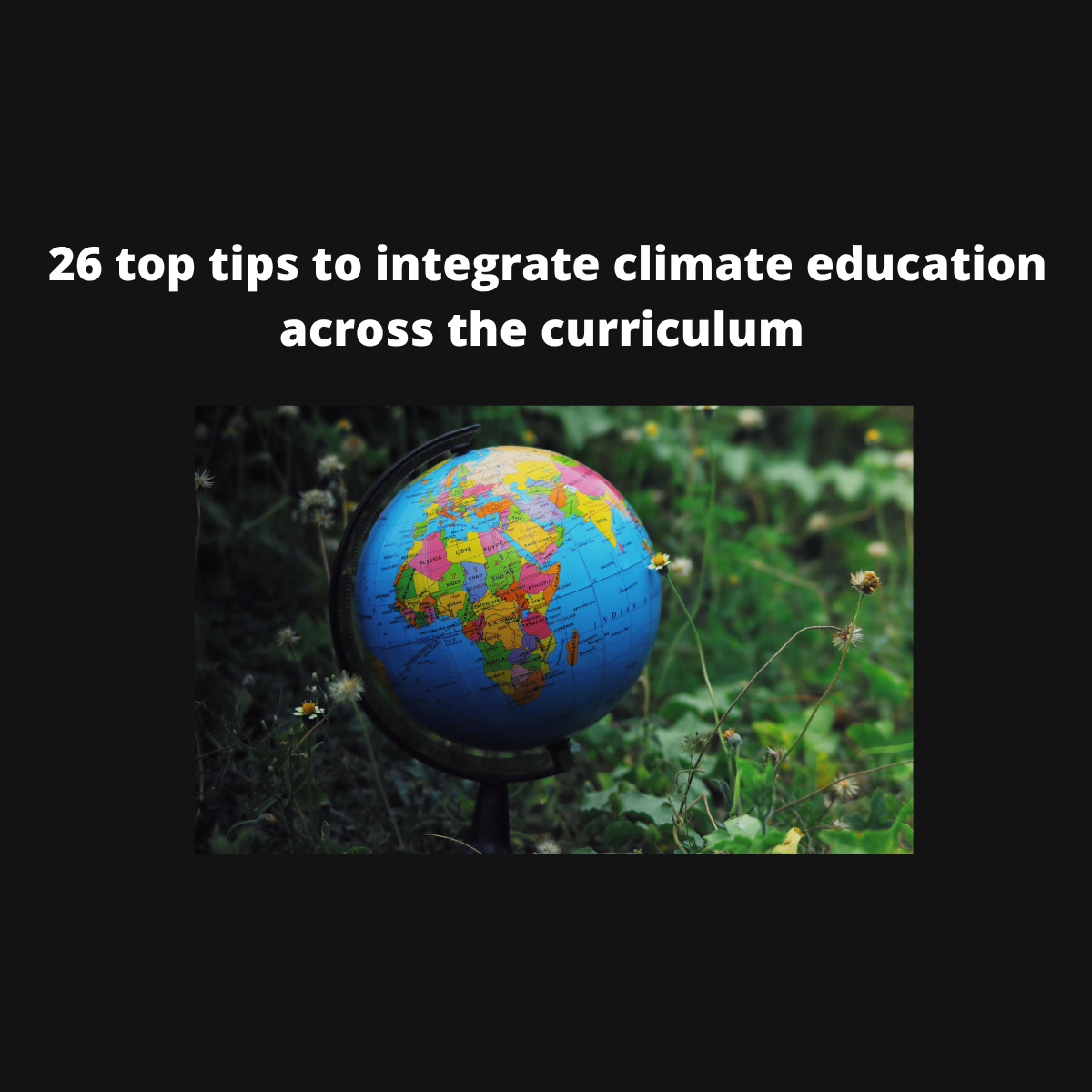This post is a guest blog by Earth Warriors Global.
Climate change is not only posing a physical threat to children, but it is also taking an extreme mental health toll, with eco-anxiety on the rise. Climate education is a proven but underutilised tool to help prepare children with the tools and knowledge they need for the future they will face. In a UNESCO survey, 95% of teachers said climate education is important in schools, yet less than 40% felt confident about teaching it.
We want to help teachers integrate climate education simply and realistically, removing the burden from teachers on how to plan, embed and connect climate education for children. These suggestions align with the National Curriculum for England to help you include climate change and sustainability positively and age-appropriately. Climate education is not just for science; it can and should be integrated into every subject as much as possible. The mindsets and habits we embed today will last a lifetime.
Here are some approaches teachers can use to integrate climate education realistically.
English
Primary
- Looking at age-appropriate media and news articles about climate change as part of reading comprehension and critical thinking, including identifying accuracy and bias
Secondary
- Writing about climate change and sustainability issues: Adapting their writing for various purposes and audiences: to describe, narrate, explain, instruct, give and respond to information, and argue.
- Climate action projects: Working effectively in groups of different sizes and taking on required roles, including leading and managing discussions, involving others productively, reviewing and summarising, and contributing to meeting goals/deadlines.
Mathematics
Primary
- Collecting, manipulating and analysing data about plants, animals and the weather or using school data if possible
Secondary
- Develop their use of formal mathematical knowledge to interpret and solve problems, including in financial contexts, e.g. the financial case for retrofitting buildings to achieve carbon neutrality.
- Use statistics to manipulate and analyse local climate change and sustainability data from the local authority and school.
Science
Primary
- Understanding what plants and animals, including humans, need for life.
- Understand that animals and plants, for example, food chains, need each other.
Secondary
- Showing awareness of the impact of values on scientific investigations and being transparent about the subjective nature of knowledge
- Interpreting observations and other data, including identifying patterns and trends, making inferences and drawing conclusions, e.g. using local, national and international climate change data.
Art and Design
Primary
- To use various materials creatively to design and make sustainable art.
- To begin to consider the environment in selecting artistic tools and materials.
Secondary
- The characteristics, properties, origins, effects and wider impact of using different media, materials, techniques and processes (including the circular economy), and how they can be used with students’ creative intentions and chosen area(s) of study as well as the impact on the environment.
Design and Technology
Primary
- To begin to evaluate products by considering environmental impact.
Secondary
- Demonstrate an ability to write a design brief and specifications from their own and others’ considerations of human needs, wants, interests and environmental considerations.
Geography
Primary
- Understand that people, animals and plants have adapted to their current climate conditions.
- Consider how human and physical geography crossover, for example, in gardens, farms and tree plantations.
Secondary
- Understanding of the greenhouse effect, the spatial and temporal characteristics of climatic change and evidence for different causes, including human activity, from the beginning of the Quaternary period (2.6 million years ago) to the present day, including an acknowledgement of the accelerating nature of global temperature increase and the extent of the scientific consensus around the likely implications of this rise.
History
Primary
- Changes within living memory, including extreme weather events and construction. Where appropriate, these should be used to reveal aspects of change in national life and the environment.
Secondary
- One thematic study involves people and their environments, events and developments. Thematic studies should include an environmental perspective, such as humans’ impact on the planet, our changing relationships with the natural world or the environmental dimension of power.
Music
Primary
- Make musical instruments out of recycled materials
- Make up their songs about looking after the environment.
Secondary
- The role of the arts, including music, in bringing about social change through activism and providing opportunities for creative solutions.
Physical Education
Primary
- Learn basic survival skills with an appreciation for the natural world.
- Notice aspects of nature, weather and habitats when exercising outdoors, such as insects or animals (ex., During the daily mile).
Secondary
- Understand the contribution that physical activity, sport and outdoor exercise in nature make to health, fitness and well-being.
Earth Warriors Global, an Ark Curriculum Plus partner, is working with teachers and schools across the UK and globally to make delivering climate & sustainability education for 3-11-year-olds easy for teachers. They have a host of ready-to-use lesson plans that can be slotted into your timetable either as a standalone topic in a class like Global citizenship or 21st-century skills, as an after-school club or as part of other subject lessons like literacy, numeracy and STEM.
